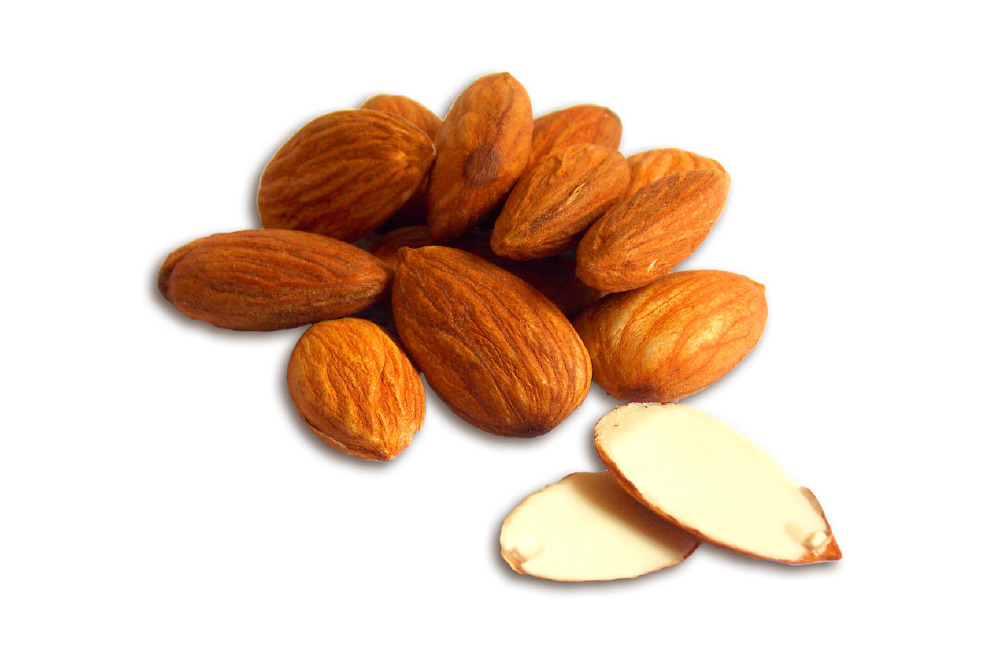Looking for the perfect snack that can complement that busy life of yours, is easy to eat on-the-go, can have on hand for a potential “hanger attack,” is 100% responsibly grown AND provides you with a bundle of health benefits?

They contain good fats
Lucy Jones, Consultant Dietitian, advises you to look no further than a handful (about 23 almonds or 28g) of almonds – a versatile, tasty and nutritious snack!
However, if you still need convincing about the goodness that this nut can bring you, then check out Lucy’s reasons why to reach for almonds and we are sure you’ll be snacking on them in no time.
Optimal snack for helping to inhibit hunger – a study found that a mid-morning snack of almonds (42g), compared to no snack, helped control appetite and resulted in reduced calorie intake for participants during the rest of the day.1
Contains a profile of good fats - Almonds contain mostly good unsaturated fats, plus they are a source of linoleic acid which contributes to the maintenance of normal blood cholesterol levels.2
Smart addition to your beauty routine - almonds are high in zinc and the B vitamins niacin and riboflavin, which contribute to the maintenance of normal nails and skin.3
Reliable sidekick snack for managing diabetes – almonds are shown to have a positive effect on modulating blood sugar levels4-7; they contain antioxidants that can help reduce inflammation and oxidation in those with type 2 diabetes.8
Help keep your energy levels up – they are a source of energising protein (6g per 28g-portion) and will help you stay strong no matter what the day may bring
A snack that won’t impact your weight – a recent study found that caloric intakes and body weights of participants who ate 43g/day of almonds as a snack or as part of a meal (for 4 weeks) remained similar to those who did not did not eat almonds.9
[1] Hull S, Re R, Chambers L, Echaniz A, Wickham SJ. A mid-morning snack generates satiety and appropriate adjustment of subsequent food intake in healthy women. Eur J of Nutr 2014; DOI 10.1007/s00394-014-0759-z.
2 Commission Regulation EU) No 432/2012 of 16 May 2012 establishing a list of permitted health claims made on foods, other than those referring to the reduction of disease risk and to children’s development and health. Available at: http://eurlex.europa.eu/LexUriServ/LexUriServ.do?uri=OJ:L:2012:136:0001. The beneficial effect is achieved with a daily intake of 10 g of linoleic acid. Almonds provide 12g of linoleic acid per 100g.
3 Commission Regulation EU) No 432/2012 of 16 May 2012 establishing a list of permitted health claims made on foods, other than those referring to the reduction of disease risk and to children’s development and health. Available at: http://eurlex.europa.eu/LexUriServ/LexUriServ.do?uri=OJ:L:2012:136:0001..
4 Jenkins D.J.A., C.W.C. Kendall, A.R. Josse, S. Salvatore, F. Brighenti, L.S.A. Augustin, P.R. Ellis, E.Vidgen, A.V. Rao. 2006. Almonds decrease postprandial glycemia, insulinemia and oxidative damage in healthy individuals. J. Nutr. 136:2987-2992.
5 Josse, A.R.C, .W.C. Kendall, L.S.A. Augustin, P.R.Ellis, D.J.A. Jenkins. 2007. Almonds and postprandial glycemia - a dose-response study. Metab. 56(3):400-404.
6 Li, S.-C., Y.-H. Liu, W.-H. Chang, C.-M. Chen, C.-Y. O. Chen, J.-F. Liu. 2010. Almond consumption improved glycemic control and lipid profiles in patients with type 2 diabetes. Metabolism.
7 Cohen, A.E., C.S. Johnston. 2011. Almond ingestion at mealtime reduces postprandial glycemia and chronic ingestion reduces hemoglobin A1c in individuals with well-controlled type 2 diabetes mellitus. Metabolism 60 (9):1312-1317.
8 Liu, J.-F., Y.-H. Liu, C.-M. Chen, W.-H. Chang, C.-Y. O. Chen. 2012. The effect of almonds on inflammation and oxidative stress in Chinese patients with type 2 diabetes mellitus: a randomized crossover feeding trial. Eur. J. Nutr. DOI. 10.007/s00394-012-0400y.
9 Tan, S-Y. and Mattes, RD. 2013. Appetitive, dietary and health effects of almonds consumed with meals or as snacks: a randomized, controlled trial. Eur J Clin Nutr N; 67(11): 1205–1214

